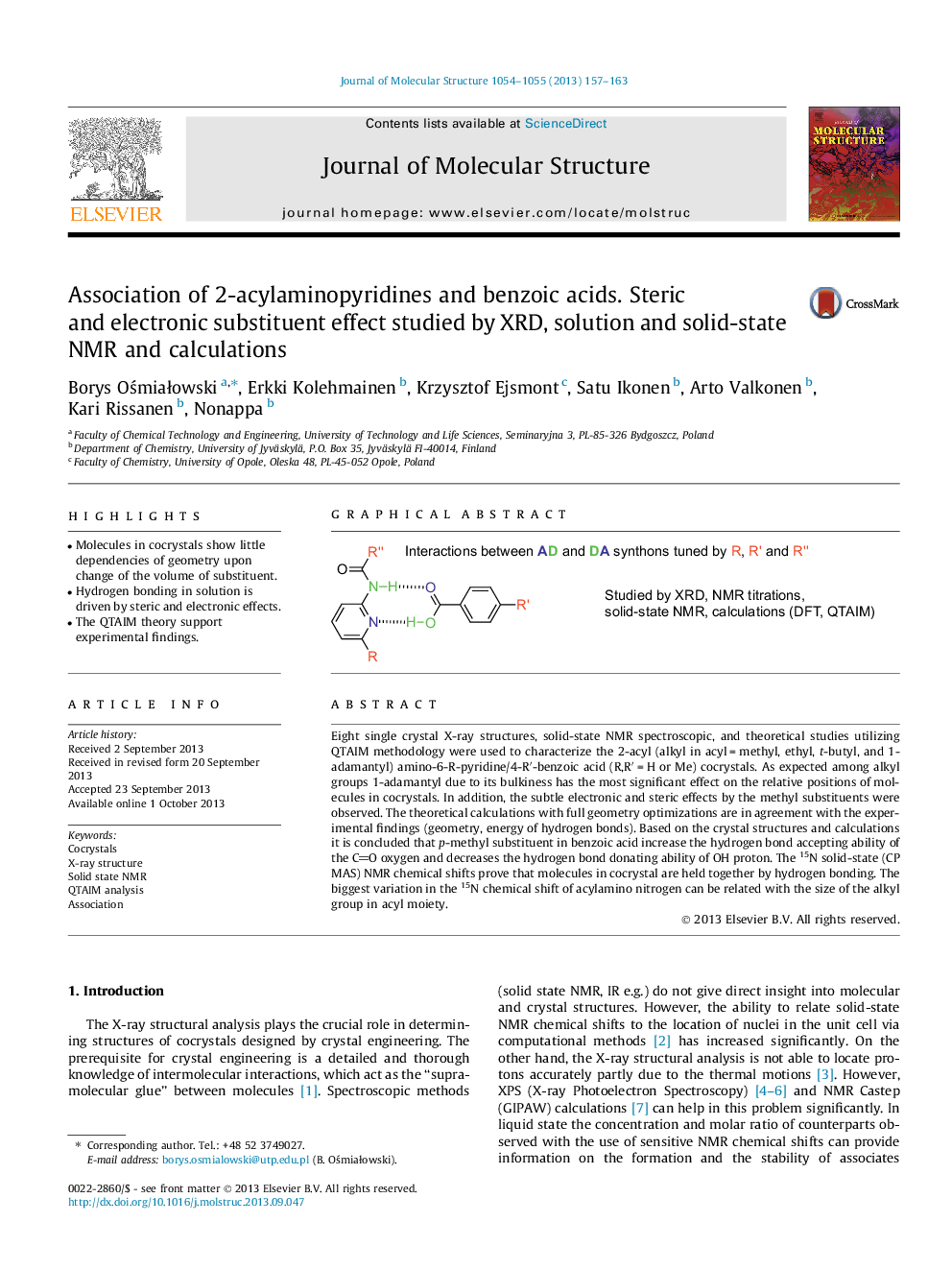| Article ID | Journal | Published Year | Pages | File Type |
|---|---|---|---|---|
| 1405861 | Journal of Molecular Structure | 2013 | 7 Pages |
•Molecules in cocrystals show little dependencies of geometry upon change of the volume of substituent.•Hydrogen bonding in solution is driven by steric and electronic effects.•The QTAIM theory support experimental findings.
Eight single crystal X-ray structures, solid-state NMR spectroscopic, and theoretical studies utilizing QTAIM methodology were used to characterize the 2-acyl (alkyl in acyl = methyl, ethyl, t-butyl, and 1-adamantyl) amino-6-R-pyridine/4-R′-benzoic acid (R,R′ = H or Me) cocrystals. As expected among alkyl groups 1-adamantyl due to its bulkiness has the most significant effect on the relative positions of molecules in cocrystals. In addition, the subtle electronic and steric effects by the methyl substituents were observed. The theoretical calculations with full geometry optimizations are in agreement with the experimental findings (geometry, energy of hydrogen bonds). Based on the crystal structures and calculations it is concluded that p-methyl substituent in benzoic acid increase the hydrogen bond accepting ability of the CO oxygen and decreases the hydrogen bond donating ability of OH proton. The 15N solid-state (CP MAS) NMR chemical shifts prove that molecules in cocrystal are held together by hydrogen bonding. The biggest variation in the 15N chemical shift of acylamino nitrogen can be related with the size of the alkyl group in acyl moiety.
Graphical abstractFigure optionsDownload full-size imageDownload as PowerPoint slide
